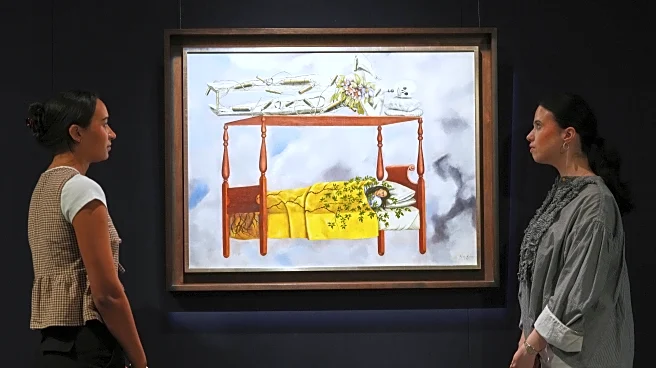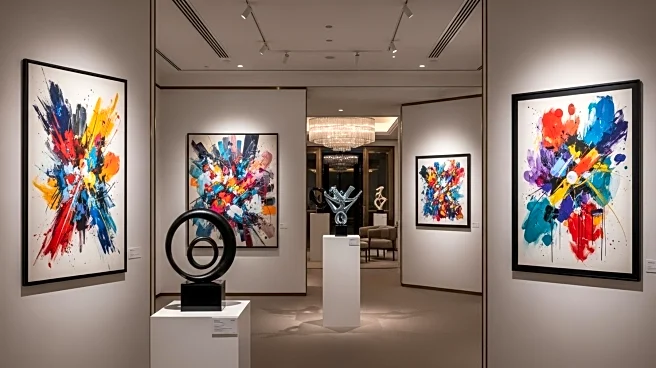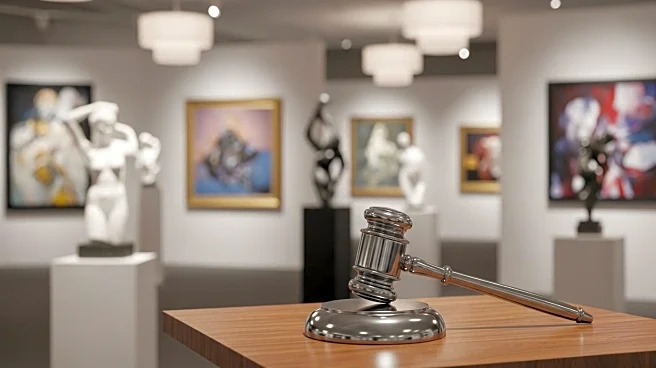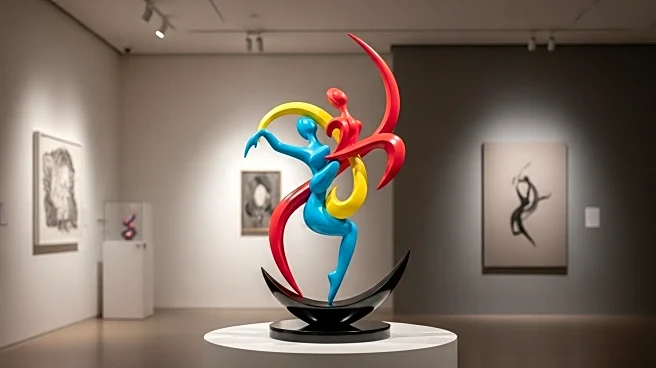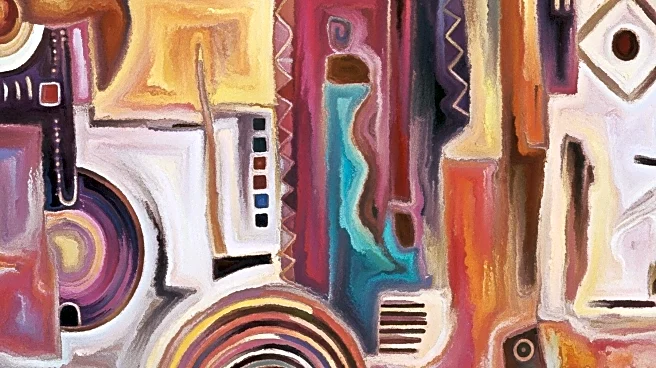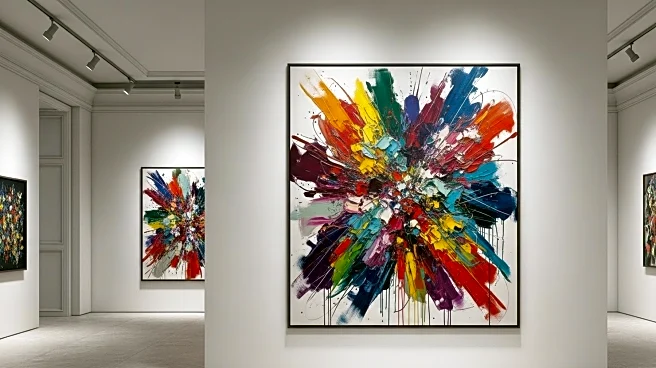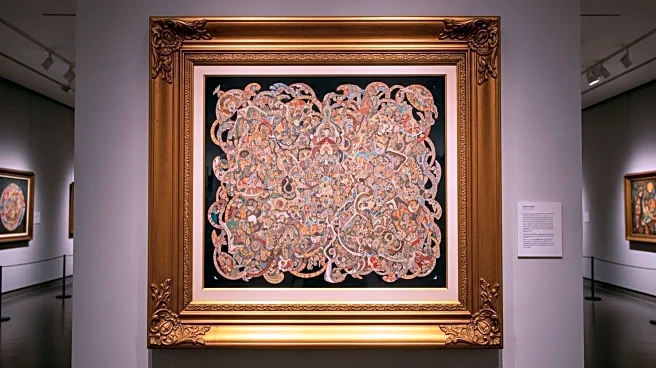What's Happening?
A portrait by Pablo Picasso, depicting his lover Dora Maar, is set to be auctioned for the first time in 80 years. The painting, titled 'Buste de femme au chapeau à fleurs (Dora Maar)', was created in 1943 during the German occupation of Paris and has remained in the same family's collection since its purchase in 1944. The auction will take place at Hôtel Drouot on October 24, with an estimated value of €8 million ($9.4 million). The portrait is significant not only for its artistic value but also for its historical context, as it was painted during a tumultuous period in Picasso's life, marked by his breakup with Maar and his branding as 'degenerate' by the Nazis.
Why It's Important?
The auction of this Picasso portrait is a notable event in the art world, offering a rare glimpse into the artist's personal and professional life during World War II. The painting's emergence from private collection to public auction highlights the enduring interest in Picasso's work and the historical narratives surrounding his relationships and artistic evolution. For collectors and art historians, this sale represents an opportunity to acquire a piece with deep historical significance, potentially influencing market trends and valuations of similar works. The portrait also sheds light on Dora Maar's role in Picasso's life and her own contributions to the Surrealist movement.
What's Next?
Following the auction, the painting's new owner may choose to display it publicly, further contributing to the discourse on Picasso's legacy and the historical context of his work. The sale coincides with the opening of 'Theatre Picasso' at Tate Modern, an exhibition exploring Picasso's fascination with performers, which may increase public interest and scholarly attention on his works from this period. Additionally, the auction could prompt further exploration of Maar's influence on Picasso and her own artistic achievements, potentially leading to more exhibitions and studies dedicated to her work.
Beyond the Headlines
The auction of Picasso's portrait of Dora Maar invites reflection on the ethical dimensions of art ownership and the responsibilities of collectors in preserving and sharing cultural heritage. It also raises questions about the portrayal of women in art, particularly in the context of Picasso's complex relationships and the impact of his depictions on the subjects themselves. As Maar famously critiqued Picasso's portraits of her, the sale may inspire renewed discussions on the intersection of art, identity, and personal narrative.

